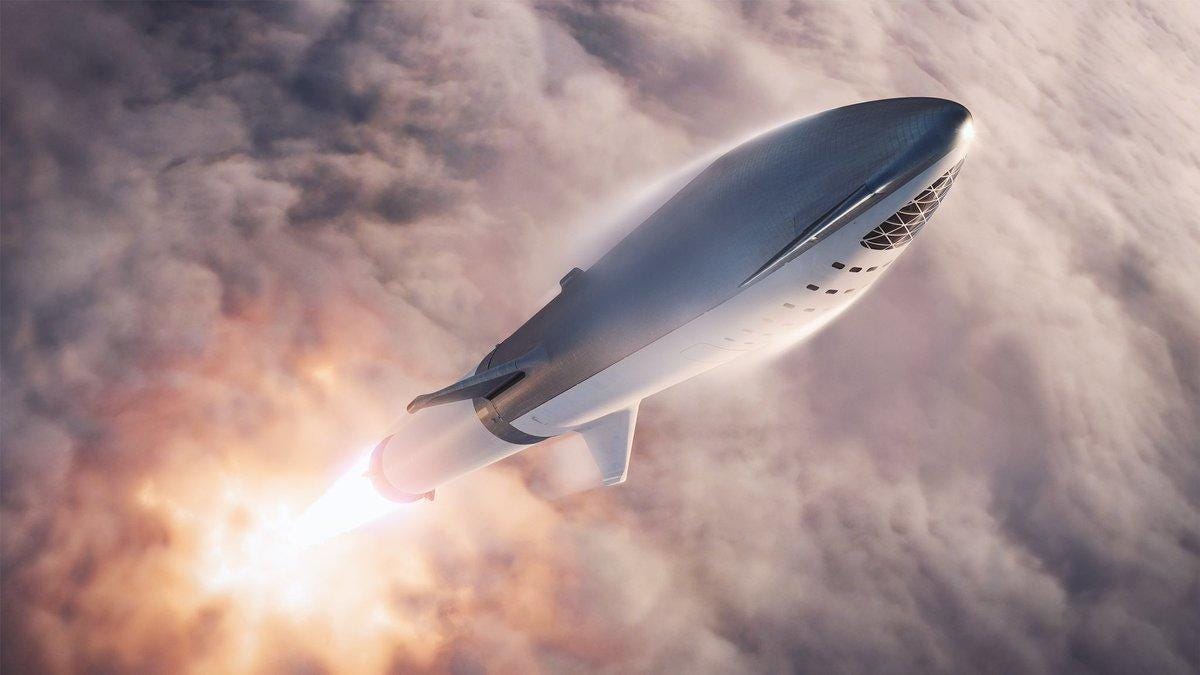SpaceX could launch Starship Mars rocket from ocean platform as soon as 2022
The company's rocket could begin point-to-point flights around Earth soon.

This dramatic render shows Starship and Super Heavy launching on a cloudy day.
SpaceX founder and chief engineer Elon Musk hopes to have a launch platform in the Gulf of Mexico ready for Starship testing at some point in 2022.
So far the company has conducted all test flights of its next-generation Mars rocket system from its development facility on shore in the tiny Texas community of Boca Chica, a place Musk has been campaigning to re-christen as Starbase, Texas.
Last year a SpaceX subsidiary purchased two former deep water oil rigs, renamed them Phobos and Deimos after the moons of Mars, and began converting them to offshore launch pads. Musk's hopes Starship will carry humans to Mars later this decade.
On Sunday, Musk tweeted an update, announcing that "ocean spaceport Deimos is under construction for launch next year."
Ocean spaceport Deimos is under construction for launch next year https://t.co/WJQka399c7
— Elon Musk (@elonmusk) May 30, 2021
The plan is to eventually use the offshore spaceports for launches to Mars, the moon and super fast point-to-point trips on Earth.
SpaceX is building floating, superheavy-class spaceports for Mars, moon & hypersonic travel around Earth https://t.co/zLJjz43hKw
— Elon Musk (@elonmusk) June 16, 2020
Eariler this year, Musk explained that Starships will be transported to the offshore launch pads by actually flying to them. So far, we've only seen Starship prototypes flying about 6 miles (10 kilometers) into the sky and then coming back down for a soft landing next to the launch pad.
Deimos and Phobos are meant for the "full stack" Starship and Super Heavy booster combination. We haven't yet seen Super Heavy in action, but Musk has said he hopes to conduct the first orbital flight of a Starship and Super Heavy from Boca Chica as soon as July.
Part of Musk's original ambition for Starship included a number of offshore launch and landing pads like Phobos and Deimos around the world. We could begin to see that vision come to life in the Gulf of Mexico as soon as next year.
Follow CNET's 2021 Space Calendar to stay up to date with all the latest space news this year. You can even add it to your own Google Calendar.

